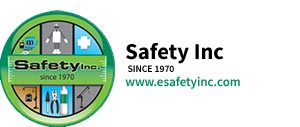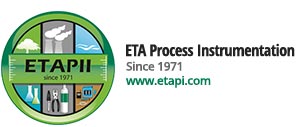Gas Detection for Liquefied Gases and Tank Farms
Chemical plants are facilities which require large amounts of basic compounds (reactants or educts), which are converted to specific products, also in large amounts.

A more or less continuous mass flow runs through from the input to output storage of a chemical plant. When gases or liquids are involved the area requires a tank farm; increasing the mass of gases calls for compression or liquification.

There are essentially three types of storage tanks: Pressure Tanks, Cryogenic Tanks, and Atmospheric Tanks.
Pressure Tanks
While mostly horizontal or vertical cylindric tanks, these also include spherical tanks. Optimal for surface/volume ratio, spherical tanks ensure homogenous tension load; because of this wall thickness is half that of the cylindrical tanks. Meantime the disadvantage of this is that they are too tall to be easily installed underground. Big spherical tanks are used for pressures up to 25 bars (the vapor pressure of liquefied gas) where a lot of gases can be kept in the liquefied state. Since liquefied gases need a much lower volume than the gas itself, there is a great mass of gas being stored, e.g. 1 m3 of gaseous butane at 20 °C weighs 2.5 kg, 1 m3 of liquefied butane weighs 580 kg, so the same volume contains a 230-fold mass in the liquefied state!

Gases that are typically stored in pressure tanks include ammonia, amines such as methyl amine, dimethyl amine, ethyl amine, and trimethyl amine, C3/C4-hydrocarbons including propane, cyclopropane, propylene, butanes, butylenes, and butadiene, mixtures of propane and butanes called LPG (liquid petrol gas), ethyl chloride, ethylene oxide, chlorine, dimethyl ether, methyl chloride, phosgene, sulfur dioxide, nitrogen dioxide, and vinyl chloride.
It is necessary for pressure tanks to be equipped with a fill level indicator with alarm facilities and sensors, for measuring the interior temperature continuously, enabling the switch on for a cooling sprinkler system in case of the temperature alarm being set of.
Safety relief valves are necessary to control the internal pressure, where gas is released into the atmosphere or into a flare-system to be burnt. Both processes involve potential costly loss of product, the first option a potential for toxic explosion – therefore, gas detection is critical.
Tank filling utilizes two connecting tubes, one for gas and one for liquid. Gas is sucked out from the storage tank by means of a compressor, then pressed into the truck’s tank. The resulting pressure then forces liquefied gas into the storage tank. It is a dangerous process, especially upon making the necessary tube connections; since gas leaks can occur, gas detection is highly recommended.
Germany has a regulation that LPG tanks containing more than 30 tons (more than 50 m3 ) LPG must be equipped with a gas detection system.
The gases most often kept in a pressure tank are ammonia, chlorine, and LPG.

Vapor pressure of liquefied gases at 20 °C:

Cryogenic Tanks
If liquefied gases have a vapor pressure of over 25 bar, increased containment increases to dangerous levels. Another way of obtaining liquefied gases is Cryogenic, which is a method of cooling down a gas below its boiling point so it liquifies.
Boiling point of liquefied gases at atmospheric pressure:

Cryogenic tanks require a complex cooling system, making cyrogenic storage more expensive than pressurized storage, but safer because liquefication is possible at atmospheric pressure.
Combinations of pressurized and cryogenic techniques is common, e.g. liquefied carbon dioxide is stored at – 30 °C and a pressure of 15 bar. LNG carriers (LNG = liquefied natural gas) use cryogenic tanks containing liquefied methane at approx. – 161 °C. In most cases it is not economical to ship natural gas in its compressed gaseous state, if not by pipelines. LNG tank farms often are directly connected or in the vicinity of harbor terminals.
Gasoline stations have cryogenic LNG-tanks; it is important to note that gas detection is necessary in this application since LNG leaks cannot be smelled, since odorants cannot be added to liquefied methane.
Low temperature cryogenic tanks are effectively insulated, with a large part of their volume composed of insulation only. These tanks contain liquefied gases such as argon (“LAr“, – 186 °C), ethane (- 88 °C), ethylene (- 104 °C), helium (- 268 °C), methane (-161 °C), oxygen (“LOx“, – 183 °C), and nitrogen (“LN2“, – 196 °C) at temperatures near their boiling point and atmospheric pressure.
Besides oxygen and nitrogen, ethylene is one of the most commonly used products world wide, so tank farms frequently are ethylene tank farms.
Atmospheric Tanks
Atmospheric tanks are used for substances which under normal conditions are liquid, in other words, stored at lower temperatures than their boiling point. Typical atmospheric tanks are used for flammable liquids (e.g. methanol, toluene, xylene), and hydrocarbon mixtures (e.g. gasolines, kerosine) produced in the refineries.
Atmospheric tanks commonly have wall thicknesses appropriate only for filling pressures from 100 mbar below, up to 100 mbar above atmospheric pressure. Loading and unloading of tanks with a fixed roof causes higher pressure differences, so relief valves with breathing openings to the outer atmosphere are built in. When not inertized, the interior of tanks containing flammable liquids is zone 0. Atmospheric breathing is done by flame arrestors to avoid flash-back into the tank. Vapors are fed via flame arrestors to a flare system, sometimes becoming recondensed.
E.g. for an acrylo nitrile (ACN) tank of 3700 m3 there is a loss by breathing of some tons ACN per year (!) if not recondensed.
see also:



